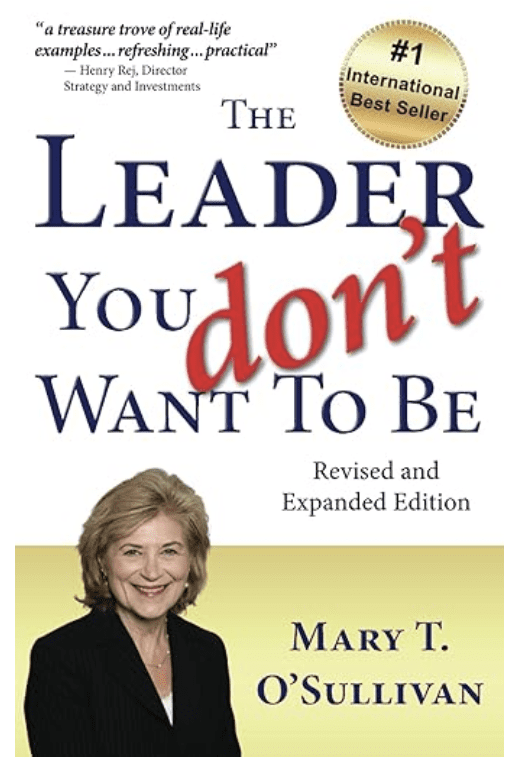Search Posts
Recent Posts
- Outdoors in RI: 138th Arbor Day, Princess Kate and access to nature, Winnapaug Pond, Vets fish April 18, 2025
- Saving lives, Paul Rego donates his 100th gallon of blood at the Rhode Island Blood Center April 18, 2025
- Rhode Island Weather for April 18, 2025 – Jack Donnelly April 18, 2025
- National Financial Literacy Month. BankRI offers free, virtual workshop: “Smart money moves… April 18, 2025
- GriefSpeak. Technology in Death and Grief – Mari Nardolillo Dias April 18, 2025
Categories
Subscribe!
Thanks for subscribing! Please check your email for further instructions.

Does it surprise anyone that incivility is still a big problem? – Mary T. O’Sullivan
by Mary T. O’Sullivan, MSOL, contributing writer on business leadership
“Managers at Fortune 1,000 firms spend the equivalent of seven weeks a year dealing with the aftermath of incivility.” – Harvard Business Review
The shouting, screaming, and swearing could be heard throughout the department. The angry person stormed through the hallway with such virulence, other employees shut their doors for fear of becoming the next object of his wrath. No one actually knew what the cause of this outburst was, and it wasn’t the first time. Bad behavior in the form of frequent tantrums and actual work sabotage occurred frequently, and no one in the office seemed to care. Reporting this conduct to HR didn’t do much good, and the boss was a personal friend, so everyone knew nothing would really become of this blatant incivility. It wasn’t until the ethics and legal departments were notified that the problem was addressed. And the “punishment” was that this offender was assigned a better office, one with ceiling high walls, a window, and a door, which were generally reserved for upper management.
Way back in 2013, Harvard Business Review (HBR) studied the topic of incivility in the workplace and relates the story of an employee who worked under an insulting and bullying boss. The employee reported the boss to HR who administered him a “slap on the wrist”. The bullying and insults continued, however, and within three months, that same boss was named “District Manager of the Year”. Three days after that, the employee suffered a heart attack.
Hazing and intimidating new employees is often considered a rite of passage in some companies. This practice proliferates among employees as they grow in the company, and despite their disdain for the bad treatment, are more than willing to pass it on to the next generation of new employees. The problem? Those new employees who would not tolerate the disparagement, quit, depriving the company of some valuable talent.
A 2024 report by the Society of Human Resource Management (SHRM) reveals that incivility is “not a rare experience among US workers.” The incivility reported was not just in the office, 42% of people reported being treated uncivilly in everyday life as well. This survey was taken during a one-month period in the first quarter of 2024. SHRM reports that American workers in the same one-month period experienced or witnessed just over “one act of incivility a day” on average. According to SHRM, Average per hour in everyday life: “Average per minute in everyday life: 119,245 uncivil acts experienced or witnessed. Average per second in everyday life: 1,987 uncivil acts experienced or witnessed.” SHRM concludes, “At this rate, U.S. workers are projected to collectively experience or witness over 62.8 billion acts or instances of incivility in their everyday lives … [by the end of] 2024.”
In fact, when comparing the SHRM report with the 2013 Harvard Business Review statistics, it appears thatnot much has changed in those years. While SHRM focuses on acts of incivility, HBR reports on the results of incivility. By now, these numbers should not surprise anyone. Here are how employees who have experienced or witnessed incivility have changed their behavior:
- “48% intentionally decreased their work effort.
- 47% intentionally decreased the time spent at work.
- 38% intentionally decreased the quality of their work.
- 80% lost work time worrying about the incident.
- 63% lost work time avoiding the offender.
- 66% said that their performance declined.
- 78% said that their commitment to the organization declined.
- 12% said that they left their job because of the uncivil treatment.
- 25% admitted to taking their frustration out on customers.”
Of course, managers will declare full awareness that incivility and rudeness at work are wrong, but not all will wake up to the impact it has on their business. And more often than not, with more options than ever today, workers will walk away rather than tolerate bad treatment. SHRM’s study is ongoing, with an annual incivility report released every Quarter. It’s interesting to note that SHRM has created incivility regions in the United States and identified those areas of the country with the highest rates of incivility. (See SHRM CIVILITY INDEX Q1 2024 Results).
Since the HBR research was released in 2013, employers have begun to place a higher priority on today’s “employee experience”, meaning what is it like to come to work every day at your organization? I remember days when, as I badged through the turnstiles, my heart sank as the turnstile opened, the thought of another day on the job was depressing. Companies now know that how people feel when they walk through the door each day impacts and has an effect on their creativity, innovation, productivity, and eventually, the success of the organization. The employee experience is now considered the employee’s journey with the company from recruiting through retirement, termination, layoffs, promotions, or quitting.
How does your organization want to be remembered? The measure of civility in your company will be your legacy. Where would you stand on SHRM’s civility index? HBR closes their report with a warning to managers that think courtesy and civility are “extravagances”. Imagine, if you will, that “Just one habitually offensive employee critically positioned in your organization can cost you dearly in lost employees, lost customers, and lost productivity.” That was back in 2013. By 2024 standards, the offensive person can be anyone at work, someone people dread dealing with every day, not just a boss or manager. Meanness isn’t reserved only for them.
“Civility is more than making others feel comfortable; it’s about creating a dynamic, diverse, and productive workplace where everyone can thrive.” SHRM Civility Index Report, Q1 2024

Connect with Mary:
www.encoreexecutivecoaching.com
https://www.linkedin.com/in/marytosullivan
Read all Mary’s columns here: https://rinewstoday.com/mary-t-osullivan-msol-pcc-shrm-scp/

Mary T. O’Sullivan, Master of Science, Organizational Leadership, International Coaching Federation Professional Certified Coach, Society of Human Resource Management, “Senior Certified Professional. Graduate Certificate in Executive and Professional Career Coaching, University of Texas at Dallas.
Member, Beta Gamma Sigma, the International Honor Society.
Advanced Studies in Education from Montclair University, SUNY Oswego and Syracuse University.
Mary is also a certified Six Sigma Specialist, Contract Specialist, IPT Leader and holds a Certificate in Essentials of Human Resource Management from SHRM.
